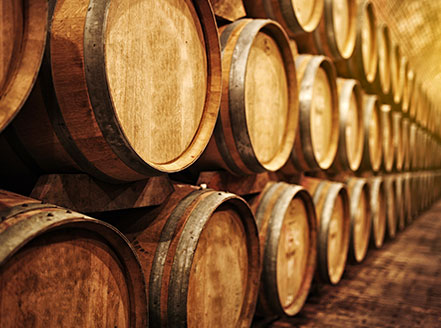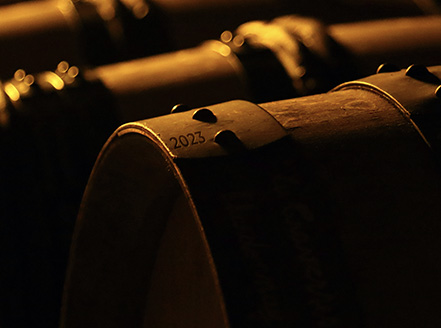With a unique style, deeply rooted in the prestigious Pauillac appellation for centuries and carried by ancestral know-how, Château Lynch-Bages embodies a remarkable harmony between opulence, power and elegance.
Location and vineyard area
Located in Pauillac, on the left bank of the Gironde, the estate extends over about one hundred hectares, mainly dedicated to red grape varieties. Located on the Bages plateau, one of the most beautiful gravelly ridges of the appellation, the vineyard neighboring Châteaux Mouton Rothschild and Latour benefits from an exceptional terroir.
A centuries-old heritage in the heart of Pauillac
The origins of the estate date back to the 16th century, on the land of "Batges". In the 18th century, Michel Lynch shaped the property by selecting the best grape varieties and innovating in viticulture. Remaining in the Lynch family for 75 years, the estate changed hands in the 19th century, before Jean-Charles Cazes took over its management in 1939, opening a new era. Since then, the Cazes family has continuously modernized the vineyard and strengthened the château's reputation.
Everything you need to know about the terroir
Terroir, exposure and climate
The vineyard extends south and southwest of Pauillac, on the Bages plateau, offering ideal exposure and natural drainage towards the Gironde. The homogeneous soils, composed mainly of deep Garonne gravels from Pyrenean erosion, are particularly stony, poor and draining, favoring deep vine rooting and optimal grape ripeness.
The grape variety composition of Château Lynch-Bages consists of 71% Cabernet Sauvignon, 22% Merlot, 4% Cabernet Franc and 3% Petit Verdot. This predominance of Cabernet Sauvignon brings structure and great aging potential to the wines, while Merlot, Cabernet Franc and Petit Verdot contribute to their roundness, complexity and elegance.
The temperate oceanic climate, under the influence of the Atlantic and the Gironde estuary, regulates temperatures, offering ideal conditions.
Cultural and sustainable practices
The famous Bordeaux estate favors reasoned agriculture: controlled grass cover, optimized phytosanitary treatment, adapted fertilization, flowering fallows, and use of environmentally friendly products. Since 2006, satellite technologies and soil surveys allow precise and sustainable parcel management.
Winemaking and aging
Harvesting is manual, with rigorous selection in the vineyard then in the cellar. Berries are delicately transported to tanks using mobile vats, without pumping. Malolactic fermentation takes place in thermoregulated stainless steel tanks, followed by traditional aging in oak barrels.
Wine style: between generosity and finesse
Château Lynch-Bages, a remarkable great wine
The great wine seduces with its power, opulence and generosity, typical of great Pauillacs. It combines structure, finesse, elegance and complexity, with aromas of black fruits, cedar, spices, and sometimes tobacco or leather. Generous from its youth, it evolves towards more depth and harmony with time, offering great aging potential.
Echo de Lynch-Bages, a supple and balanced second wine
From young vines, Echo de Lynch-Bages seduces with a more supple structure and melted tannins, while preserving the estate's aromatic signature: red and black fruits, freshness, balance and gourmandise.
Blanc de Lynch-Bages, a lively and subtle dry wine
This dry white wine, composed mainly of Sauvignon Blanc, complemented by Sémillon and Muscadelle, is distinguished by its freshness, liveliness, notes of citrus, exotic fruits and white flowers, as well as subtle minerality.






















